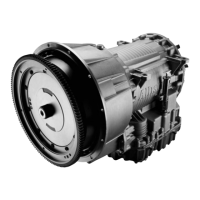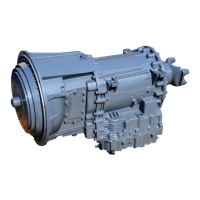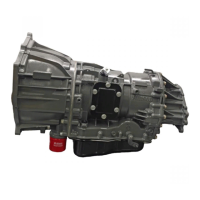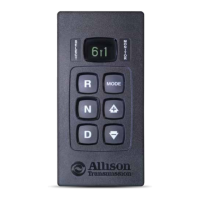3–1. DRAINING TRANSMISSION
Drain the transmission fluid before removing the transmission from the vehicle.
1. Remove the drain plug from the oil pan. Examine the drained fluid for
evidence of contamination (refer to Section 2–7, TRANSMISSION FLUID
CONTAMINATION, Paragraph a. Fluid Examination). Reinstall the drain
plug.
2. Remove the transmission fill tube if it interferes with transmission removal.
Plug the fill tube hole in the main housing to keep dirt from entering the
transmission.
NOTE: A significant amount of fluid may drain from the hydraulic lines
when they are disconnected from the transmission.
3. Disconnect all hydraulic lines from the transmission. Remove the lines
from the vehicle if they interfere with transmission removal. Plug all
openings to keep dirt from entering the hydraulic system.
4. If an integral cooler is used, drain coolant from cooler and disconnect
coolant hoses. Remove the hoses from the vehicle if they interfere with
transmission removal. Plug all openings to keep dirt from entering the
cooling system.
3–2. DISCONNECTING CONTROLS
1. Disconnect or completely remove controls. If controls are not removed
from the transmission, position them so that they do not interfere with
transmission removal.
2. Disconnect the external wiring harness at the feedthrough harness
connector. Refer to Figure 3–1 or Figure 3–2. Prevent dirt or moisture from
entering a disconnected connector. Position the wiring harness so it does
not interfere with transmission removal.
— For the 3000 Product Family transmissions, disconnect the input
(engine) and output speed sensors.
— For the 4000 Product Family transmissions, disconnect the input
(engine), turbine, and output speed sensors (refer to Figure 3–1).
REMOVING
TRANSMISSION
Section III
51
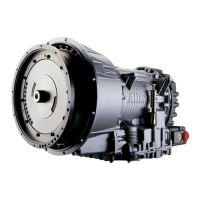
